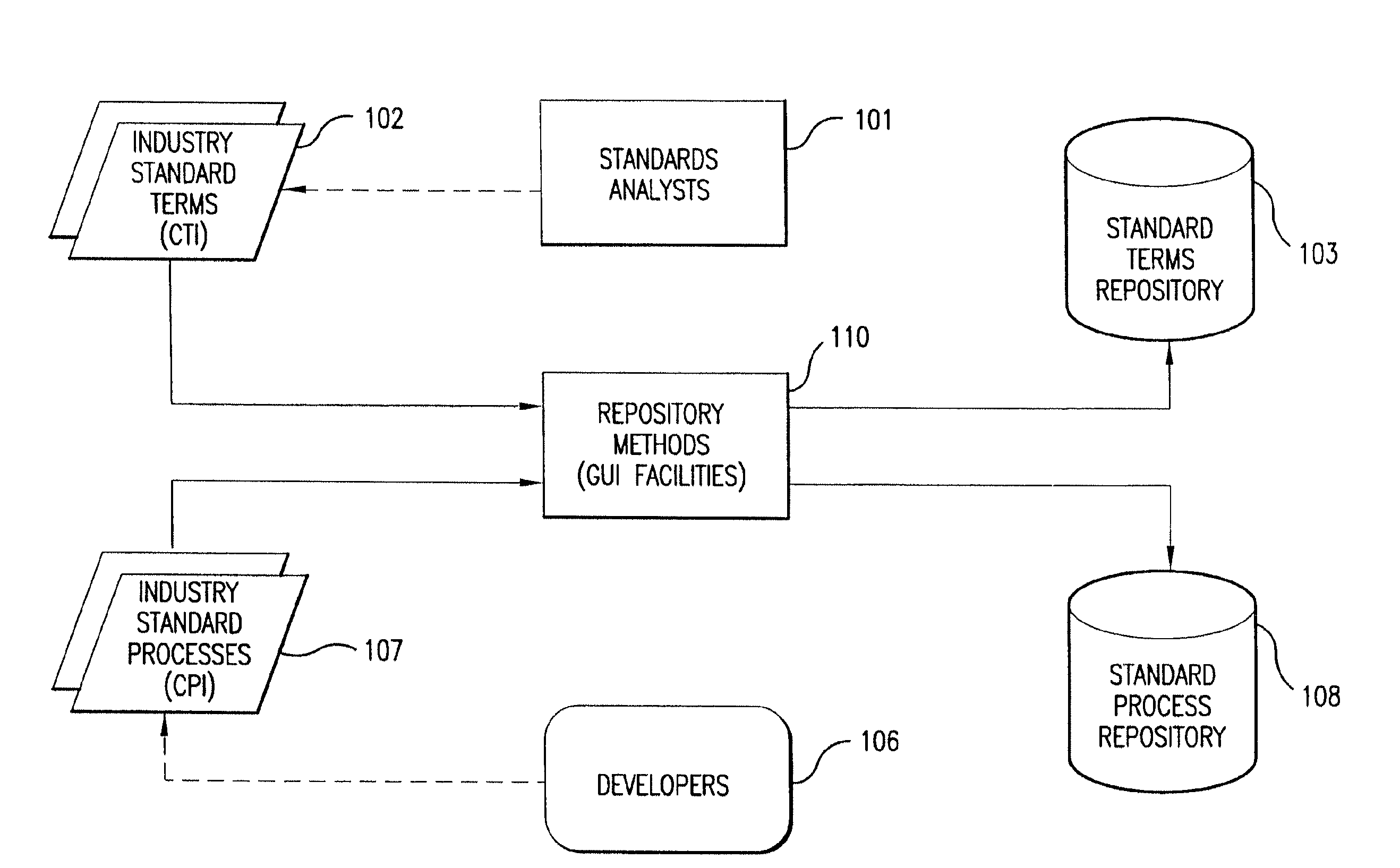Method and system for transferring information using metabase
a technology of information transfer and metabase, applied in the field of methods and systems for transferring information using metabase, can solve the problems of inability to easily adapt to functional interoperability, inability to standardize the order of metadata content and order, and inability to exchange application-to-application data, etc., to facilitate information exchange, facilitate electronic information exchange, and facilitate the effect of extensive “setup” time and arrangements
- Summary
- Abstract
- Description
- Claims
- Application Information
AI Technical Summary
Benefits of technology
Problems solved by technology
Method used
Image
Examples
Embodiment Construction
[0034]The preferred embodiment employs repositories of standard terms (or names) and standard process names that enable applications having incompatible names and data formats to communicate with each other without converting their data structures to a different format. FIG. 1 illustrates a preferred way of constructing and maintaining these repositories of standard information. Standards analysts (see 101) are individuals who study various sources of relevant information and define and enhance the standard. They are preferably provided with a graphical user interface (GUI) 110 for entering and maintaining the lexicon of the standard. The terms and process names approved by the analysts are then stored in the term and process repositories, illustrated at 103 and 108, respectively. Updated repositories of standard terms and process names are periodically distributed to all the participants that use the preferred method of data exchange.
[0035]The standard terms stored in repository 10...
PUM
 Login to View More
Login to View More Abstract
Description
Claims
Application Information
 Login to View More
Login to View More - R&D
- Intellectual Property
- Life Sciences
- Materials
- Tech Scout
- Unparalleled Data Quality
- Higher Quality Content
- 60% Fewer Hallucinations
Browse by: Latest US Patents, China's latest patents, Technical Efficacy Thesaurus, Application Domain, Technology Topic, Popular Technical Reports.
© 2025 PatSnap. All rights reserved.Legal|Privacy policy|Modern Slavery Act Transparency Statement|Sitemap|About US| Contact US: help@patsnap.com



